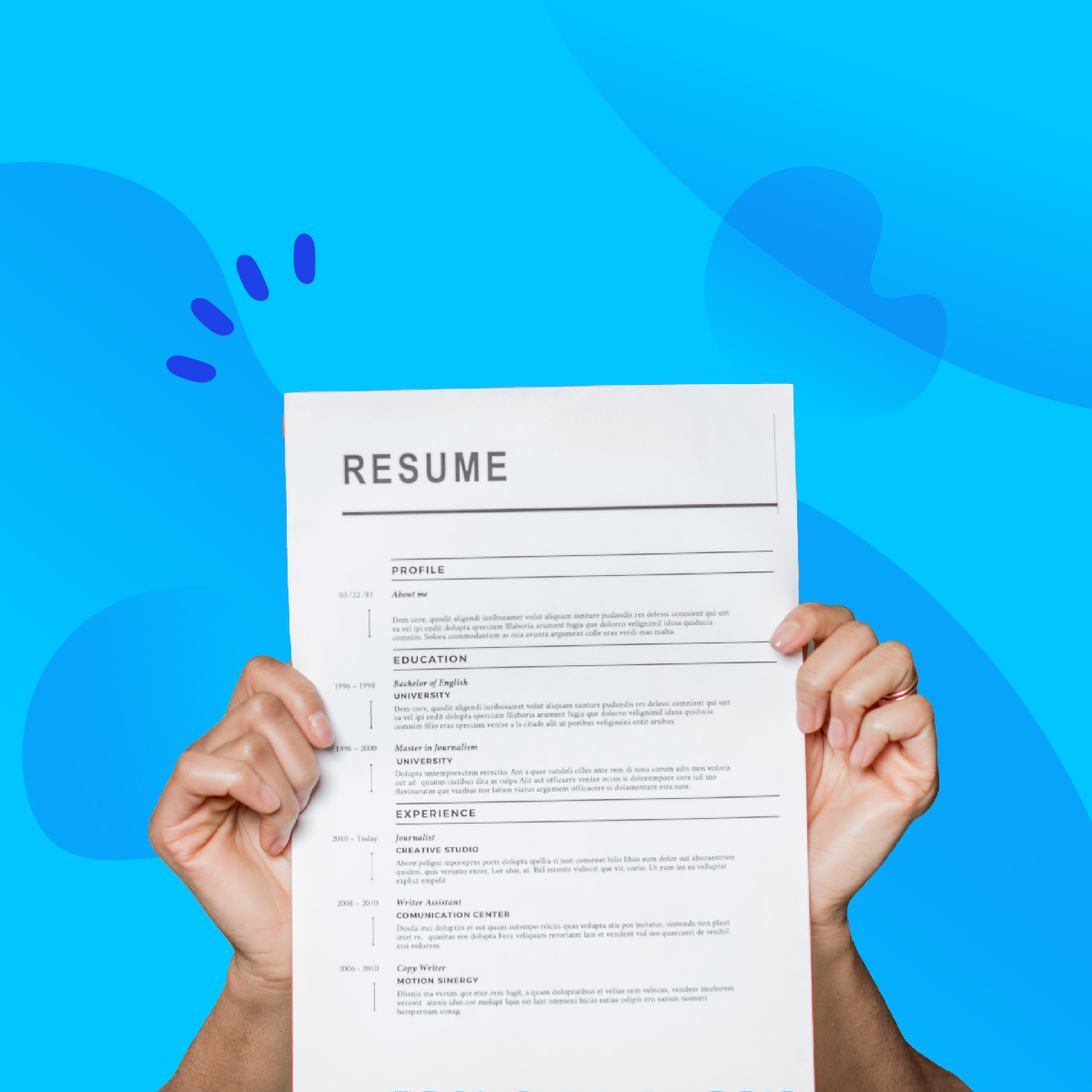
You’re probably here because you’ve got an important networking event and someone name-dropped the famous (or infamous for many students) elevator pitch that you need to prepare for.
Part of breaking your way into the professional world is learning how to sell yourself with limited time and attention. The elevator pitch is one of the first obstacles in doing so.
Whether you’re a high school student or in college, at Upkey, we’re going to take you through some model student elevator pitch examples, dissect them, and share some pro tips on nailing your first elevator pitch. We know it may seem daunting. But after reading this guide, it won’t be as hard as it seems.
Ready? Let’s pitch.
What does an elevator pitch mean for students?
Well it’s a ball pitch in an elevator of course. Ding ding.
~End dad joke.
An elevator pitch is your most important professional and educational experiences, accomplishments, and milestones packed into a 30-60 second seductive speech designed to gain a (typically) recruiter’s favor.
Students often use it to introduce themselves in networking situations, career fairs, or, well, in an elevator (with someone of interest, not your 60-year-old neighbor Deborah from the 11th floor). The idea is to summarize yourself within the time it takes to be in company with someone on an elevator – hence the name, elevator pitch.
Think of it like your LinkedIn bio coming to life with some pizazz.
Typical structure for a winning elevator pitch (How to write one)
Since an effective elevator pitch is meant to be short, its structure is nothing extreme. It’s rather straightforward, and can be categorized into 5 steps.
- Introduce yourself (name, position, what you do, how you do it)
- Compelling details about yourself. Whether it’s something cool (and relevant) you learned recently, an interesting story on how you got into your field, or a pain point you can both relate to, mention something that comes off friendly and unique.
- Specific goal/career interest. By this point (about 15-20 seconds in), you want the person to stop wondering what the hell you’re doing here. Let them know where you’re headed in your career, your goals, aspirations – something that they can obviously help you with.
- Drop your past achievements (show how you’ve demonstrated that interest). Now you want to let em’ know you’re qualified despite your “student” status. What better way to do that than show that you’ve been there and done that – while killing it through relevant experience, awards, and a personal story.
- The request. Go in for the kill – that doesn’t mean ask them for an internship, but you can steer it one of three ways: continue the convo by letting them take the wheel, propose a future meeting to learn more about each other, or ask for their organization’s Head of recruiting to apply to their position of interest, now that you’ve made an impression.
And voilà. You’ve got yourself a done and dusted elevator pitch for when you’re looking for a job, looking for people to invest in your billion-dollar idea or making new friends.
If all that’s quite a bit to remember, just think back to the acronym: STAR. The S and T stand for Situation and Task, where you explain the assignment you were undertaking. The A is for Action, so what you did to cleverly solve the situation. And R is all about the Results, here’s where you talk about the impressive numbers born from your action plan.
Why it’s handy
It’s no secret that elevator pitches are popular among any industry and profession. But here’s a quick refresher on why exactly elevator pitches work well.
- They’re a productive summary for time-constrained situations. Not everyone has the time, nor desire, to listen to your 10-minute spiel. Elevator pitches let you take advantage of real-life interactions with important people who have limited attention to give, so you can convince them you deserve more of their time later.
- Good conversation starter. A quick and friendly summary on who you are and what you’re looking for is a convenient way to start a conversation with anyone in the appropriate setting. An elevator pitch is not too long where you look like you’re self-obsessed and selling yourself, but it’s also not too short, where there’s no substance to build-on. It’s juuust right.
- Yawn-proof. If you articulate your elevator pitch right, you’ll have them sold – and not yawning – by the end. In fact it’s kind of difficult to yawn at an elevator pitch. 9 times out of 10, the person will be grateful for the short, sweet, and impressive introduction and be willing to dedicate more time at a later date.
Elevator pitch examples (in different scenarios)
First, here’s what not to do (a bad elevator pitch example):
Alongside model examples of great elevator pitches, it’s just as important to cover what not to do. In the example below, we have a rather common situation where students are trying to pitch with little to no experience (at least, that’s what they think).
“Hi,
My name is Sandra and I am a freshman at the University of Illinois majoring in Apparel Merchandising and minoring in Marketing. Although I do not have any experience in the industry I have a strong passion for fashion and marketing. I am looking for a summer internship in the fashion industry where I can use my creative skills.”
Why this isn’t the best:
Sandra has a strong introduction and expresses her passion, but she wasn’t resourceful and left the impression that she has never done something where she learned valuable skills.
Sure, she may not have any corporate experience, but if she’s truly passionate about it, she must’ve engaged in something regarding fashion and marketing, right? She could mention a school project or club she’s a part of. Or an at-home project she’s working on.
You need to build trust and credibility with recruiters and in order to do that find a time where you learned something. Having an experience that is not necessarily a “job” is much better than just simply stating what you are passionate about or what you are good at.
Take a look at more examples of learning experiences you can include if you have never had a real job:
- Clubs
- Volunteer Experience
- Babysitting
- School projects
- Job shadowing
- Sports Teams
- President or leader of a team, club, or other groups
A strong elevator pitch at a career fair
This is probably your most common scenario. You step foot in a room full of booths representing different companies, or it’s a virtual setting with break rooms, or, maybe you’re cold calling some brands. Either way, all of them are offering internships, and there’s a room full of yous competing for it.
So revisiting the Sandra example, let’s take a look at what a solid elevator pitch looks like.
“Hi, my name is Sandra and I am a freshman at the University of Illinois majoring in Apparel Merchandising and minoring in Marketing.
I have always had an interest in fashion and enjoy reading fashion magazines and blogs. After completing a four-week long school project where I created a styling tips guide, I sharpened my creativity skills while also learning how to use photoshop.
From there I was able to take a lead role in my school’s annual fashion show charity event to craft all the marketing and outreach material like flyers, posters, pre-event trailers, for which we had over 600 community guests and $4000 in ticket sales, all donated to the Illinois homeless women’s foundation. I am looking for a summer internship in the fashion industry where I can help a marketing team by using my creativity and photoshop skills.”
What’s nice about it:
- Nice and quick introduction that tells the listener all they need to know about Sandra and her academic background.
- Since Sandra does not have any job experience yet, she discussed a relevant school project where she learned skills that will help her excel in the job she is looking for.
- She demonstrated initiative in using these hard skills to make a monetary impact elsewhere (the charity event) and mentioned solid results: “600 community guests and $4000 in ticket sales…”
- She was clear about her goals in the end.
At a job or internship interview
Your elevator pitch in a job interview is essentially the answer to the infamous question: “Tell us about yourself”. You’ll have little creative room with this kind of delivery, since you’re following the rules of the interview game.
“Well, I’m currently powering through a degree in Business Communications at the University of _________. [Previous employer] has been my home for the past two years, where I currently work as an intern Development Assistant.
I like to think I’ve quite well improved some of the operational procedures there, like implementing a workflow system that allowed my colleagues to streamline purchase order requests, and helping them move to a digital system for managing reimbursing expenses for employees.
Lastly, I’ve also reeled in some serious fundraising opportunities for the company, which further speaks to my success in that role. As your juniorbusiness developer, I believe my experience in prospect material production and strategic calendar development could be a benefit to you.
What’s nice about it:
- Quickly informs the listener about academic qualifications and recent professional experience.
- They start sharing some at-work accomplishments with a humble brag “I like to think…” (works well with a smile and small shrug).
- Specific with examples about the business process optimization. Allows the opportunity for the interviewer to circle back and ask about the specifics on “operational procedures” and the methods to acquire the “fundraising opportunities.”
- Good use of possessive language in the end: “As your business developer…” suggesting that they’re ready to be a teamplayer.
At a casual networking event
Sometimes your elevator speech won’t be for employment or internship opportunities, but at a conference or networking event to meet others in your industry. Or it may be a simple virtual coffee chat with a new team member you’ve just met.
In whichever case, you could try something like this:
“What do I do? I’m kind of working to make those sci-fi movies on TV a reality. I’m a junior at ______ completing my Bachelor’s in Nanotechnology for next year. So, you know when Tony Stark pulls on his sweater’s drawstrings and it morphs into a full-fledged Iron Man suit in The Avengers Infinity War? We’re in the very early stages of making something like that possible. Right now, the world of Nanotech is playing with small particles to alter an object’s physical form and function. I’ve personally been working on a self-fixing regenerative material for the past 6 months. It should, in theory, rebuild itself after taking damage, like our skin! Could I show you some time?”
What’s nice about it:
- With complex topics that people may not easily grasp, analogies and pop culture references are extremely effective. In this networking event, this person uses an Avengers movie reference and compares his current project to human skin – both relatable and amusing points for an investor or someone else non-industry.
- After telling the interesting story, the person offers to arrange a later meeting date where they can learn more. Alternatively, if you’re meeting with a fellow student, you can bounce the question back and ask what they’re working on.
Before you leave: Take these pro tips with you for a perfect elevator pitch
- Remember to speak slowly. We can’t stress this enough. Students will auto-program themselves on 2x speed thinking they have to get their elevator speech under 60 seconds. That’s not an elevator pitch. That’s an essay you’re reading too fast. You need to structure your pitch in a manner where you speak slowly and steadily and still hit the time-mark – that means being honest with yourself and cutting out what isn’t necessary.
- Do your homework. You know what’s more impressive than a prepared elevator pitch? One that’s prepared and tweakable. If you know who you’ll be speaking to, learn as much about them, their company, and even their pain points. Use this information to tailor your pitch, whether it’s dropping that you’ve handled similar problems in the past, or that you understand the struggle and share a passion towards creating solutions.
- Avoid overly complicated terms or casual slang. This is really about understanding and reciprocating the vibe of the person of interest. But since you probably don’t know much about them yet, generally speaking, you don’t want to sound overbearingly formal or on the other extreme, like you just got out of juvy. Once your pitch is over and they’ve gotten a chance to speak, you can just match their energy (e.g., if they casually drop “shit” here and there, you don’t need to keep up the corporate bullshit).
- Speak in a friendly and non-robotic way. Going back to the first point, you don’t want to sound like an automated voice system. Honestly, it’s really not that different from talking to someone at a bar or club, you can approach with the same friendly vibe – minus the flirtatious innuendos and body language of course. Alongside a conversational tone, you can come off more “human” by:
- Maintaining eye contact. Don’t stare into their soul, but acknowledge their presence – you should be making eye contact 60-70% of the time to create a memorable connection. It shows you’re confident.
- Using their name. While overusing it can come off creepy and scripted, occasionally using a person’s name in conversation creates a culture of respect, recognition, and consideration.
- Smiling and laughing. While The Joker is nowhere near a model employee, he was right about one thing, and that’s: “why so serious?” Take a chill pill. Yes, talking to a recruiter is nerve-wracking, but keeping a straight face and showing no spice isn’t exactly how you get people to like you. Show some personality. People are more willing to laugh in social settings to release tension or submit to an in-group feeling – don’t be so nervous, we’re human.
- Practice, practice, practice! When we say practice, we don’t mean regurgitating the same sentences repeatedly to memory. We mean analyzing your phrases, understanding social cues, and working on the right body language to deliver your words with. It needs to seem natural. We guarantee that’s how your favorite actor goes about it.
You’ve got the elevator pitch down—but who are you going to pitch to?
After learning the basics and examining some great pitch examples for students, you should have a solid idea on how to create a compelling elevator speech for recruiters yourself. Remember that this isn’t just an asset in real-life, but you can tweak it for online emails and messaging outreach too.
All that’s left now is reaching out to the right employers who will hear (or read) your award-winning elevator pitch. Use a platform like Upkey to build and optimize your resume and find the next job or internship in your area – we’ve got over 1 million entry-level opportunities, curated for students like you.
You can give it a shot here.



